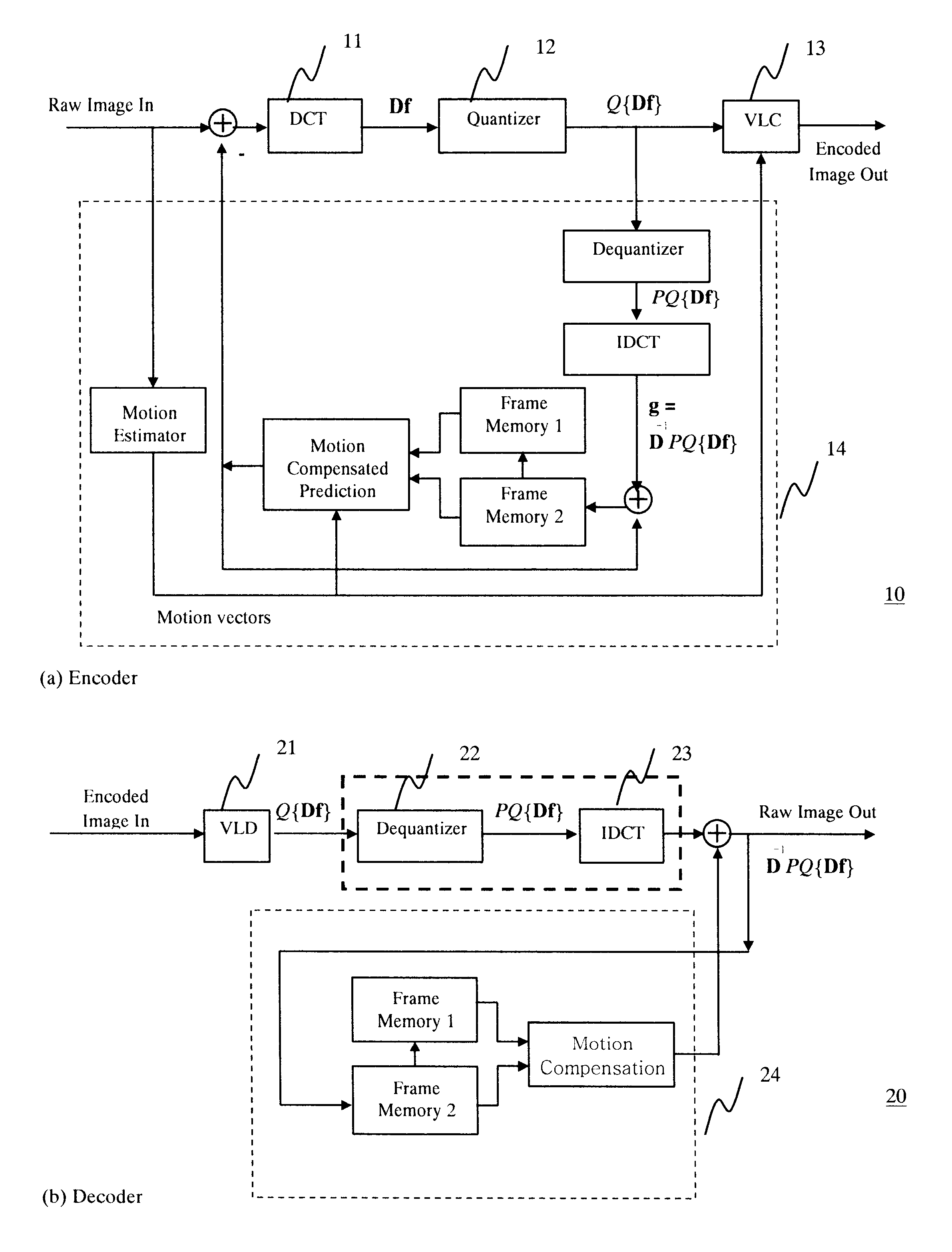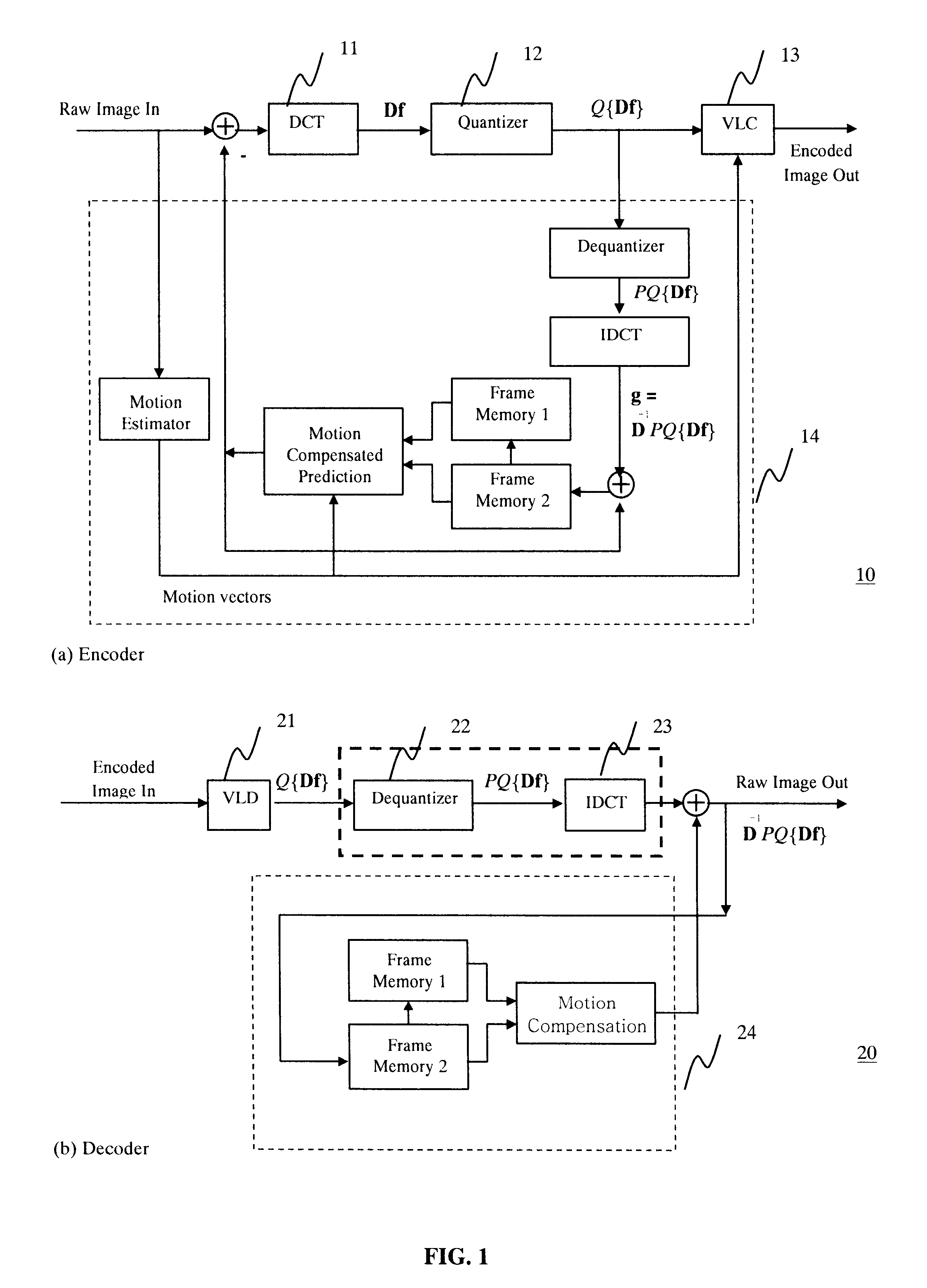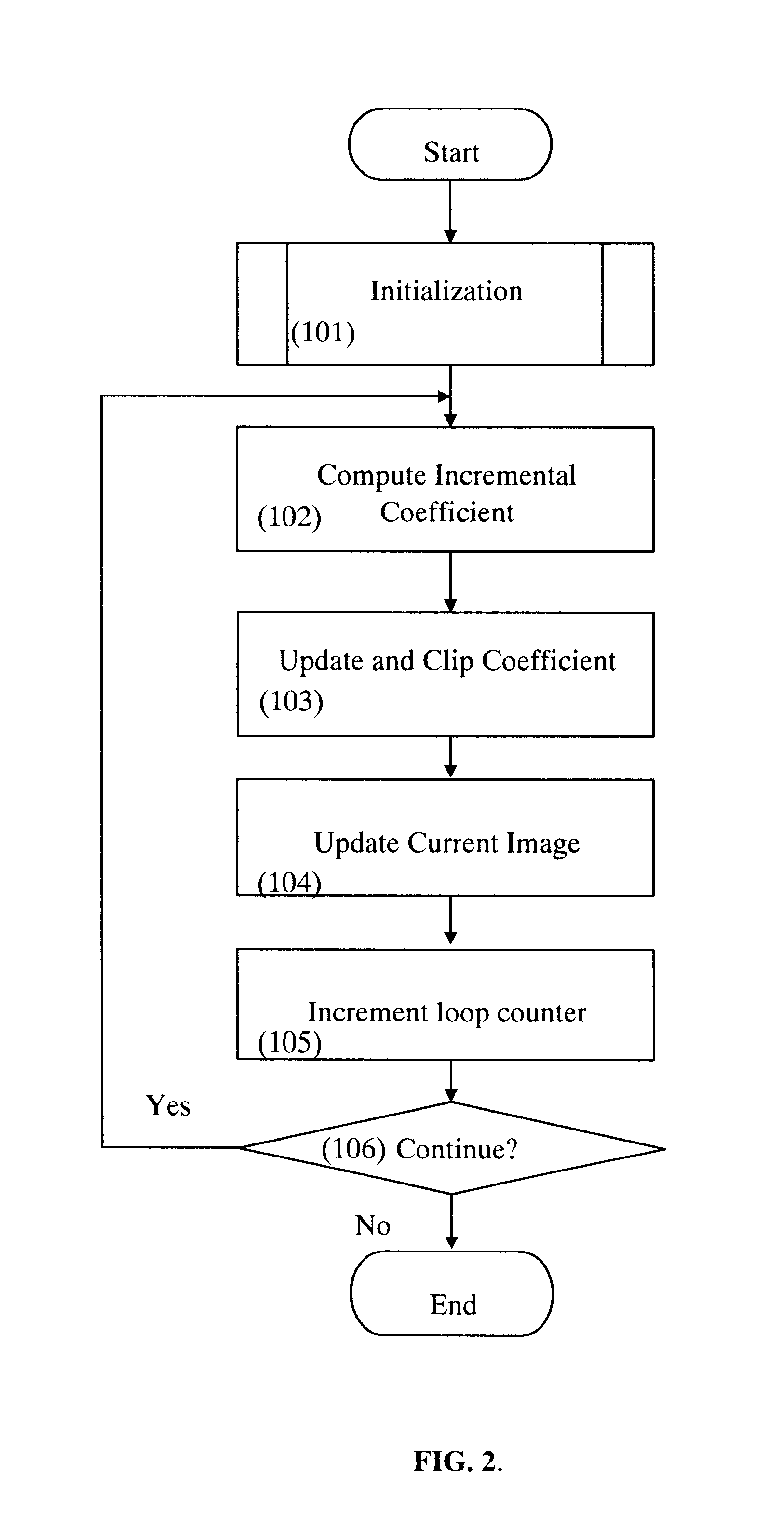Regularized dequantizer for DCT-based transform coding
a dequantizer and transform technology, applied in the field of digital images including video, can solve problems such as inability to achieve smooth recovery
- Summary
- Abstract
- Description
- Claims
- Application Information
AI Technical Summary
Benefits of technology
Problems solved by technology
Method used
Image
Examples
Embodiment Construction
Modeling DCT-based Transform Coding
Before describing the details of the regularized dequantization of the present invention, the conventional DCT-based transform coding currently specified in the MPEG standard (as well as JPEG, H.261 and H.263) is reviewed to establish the notation.
In MPEG or other conventional DCT-based transform coding standards, the image is first divided into 8×8 blocks and the individual blocks are transformed by the discrete cosine transform (DCT). The output of this operation is denoted by Df, where f is the lexicographically ordered image and the operator D is the appropriately defined 2-D DCT matrix. The DCT coefficients are then quantized with or without a dead-zone. Since the quantization process includes a division (or a multiplication by its inverse) step by elements of the quantization matrix, the quantization operator Q can be mathematically expressed as follows:
Q{Df}=round{M−1Df−sgn(Df)δ / 2}=M−1Df−sgn{Df}δ / 2+½−rem{M−1Df−sgn(Df)δ / 2+½} (1)
where round{ ...
PUM
 Login to View More
Login to View More Abstract
Description
Claims
Application Information
 Login to View More
Login to View More - R&D
- Intellectual Property
- Life Sciences
- Materials
- Tech Scout
- Unparalleled Data Quality
- Higher Quality Content
- 60% Fewer Hallucinations
Browse by: Latest US Patents, China's latest patents, Technical Efficacy Thesaurus, Application Domain, Technology Topic, Popular Technical Reports.
© 2025 PatSnap. All rights reserved.Legal|Privacy policy|Modern Slavery Act Transparency Statement|Sitemap|About US| Contact US: help@patsnap.com



